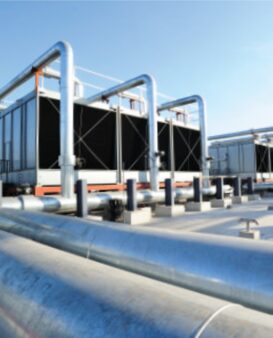As the world embraces digitalization … everything from eCommerce to AI and more, the need for data centers appears to be growing logarithmically! It is a significant growth opportunity for many HVACR distributors as these “keepers of data” are huge energy hogs and need to be cooled to operate efficiently.
Global spending is expected to grow a minimum of 10% per year through 2030 and global spending is expected to be $49 billion! Hundreds of new data centers will be built here in the U.S., which accounts for 40% of global demand according to a McKinsey report.
To help HVACR distributors, Danfoss released a white paper on data centers to help distributors better understand how they can help customers (engineers and contractors) on how they can improve, and reach sustainability.
And, of note, not all data centers need to be the large “hyperscale” centers that Google, Microsoft, Facebook and Amazon are building in. There are 4 tiers of data centers, so there are opportunities for many distributors to consider as “opportunities.”
If you’re interested in a growth vertical, I suggest downloading the white paper and learning more about this vertical … and then consider which of your suppliers you can “package” into a data center offering.
Danfoss Shares Research and Expertise on Data Center Best Practices
New paper explores challenges and opportunities as data center industry moves toward decarbonization.
“Danfoss has released a new paper, “Data Centers and Energy: Reaching Sustainability,” focused on designing and managing sustainable data centers. Part diagnosis, part roadmap, and part inspiration to meet the sustainability test, it provides a robust framework for developing best practices for data center design and management.
As data centers grow in size and number, their energy usage and carbon emissions are also forecast to grow. With the push toward decarbonization to meet the goals of the Paris Agreement, it is imperative that the data center industry implement energy-efficient and carbon-neutral cooling solutions. Data centers will also need to explore holistic ways to be part of a sustainable community infrastructure. As Scott Foster, former director of sustainable energy at the United Nations and currently a senior fellow at Boston University and senior advisor with the Enniscorthy Forum, writes in the foreword:
“The digital economy is fast, ever growing, ever evolving, and ever more complex and energy intensive. Progress translates into data management being a source of a growing percentage of growing total greenhouse gas emissions. With global atmospheric temperatures already breaching the 1.5°C target and no clear peak in sight, such a potent and significant source of new emissions cannot be ignored.”
Following an executive summary by Jakob Jul Jensen, head of data center solutions at Danfoss, the paper explores different approaches to data center cooling, the costs of energy inefficiency, how increased energy efficiency can become a source of profit for data centers and how recent legislation such as the Inflation Reduction Act is providing incentives for a green transition in the data center industry. Topics covered include the intersection of carbon, water and energy when evaluating data center performance, the economics of sustainable data centers and the infrastructure needed for a true green transition.
The paper also emphasizes that data centers can go beyond implementing advanced sustainable cooling solutions; they can become valued contributors to community energy systems where their heat can be captured and reused by other buildings:
“Viewed from a community energy standpoint, then, data center excess heat can be part of a holistic system providing community energy services. The heat created by data centers can be deployed to heat buildings, heat water, and provide heat to other processes needing it. Data center heat energy can be stored in a variety of ways and used as needed to offset targeted electricity applications, especially during peak load hours, or to reduce the power load consistently throughout the day by replacing the need for electricity at a discrete location.”
The paper acknowledges that this would require additional investments in infrastructure, but as North America looks to decrease carbon emissions and reduce energy consumption, data centers heat reuse represents a feasible solution to building a sustainable future.
As part of its commitment to helping build sustainable data centers through collaboration and the sharing of best practices from leading researchers, in September of 2023 Danfoss joined forces with Google, Microsoft and Schneider Electric to launch a Pan-European Net Zero Innovation Hub. The Hub will bring together key stakeholders in the European data center sector, including regulators, researchers, operators, utility providers, NGOs, and grid/network services, with the goal of developing concrete solutions to accelerate the green transition of data centers.
